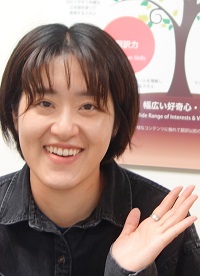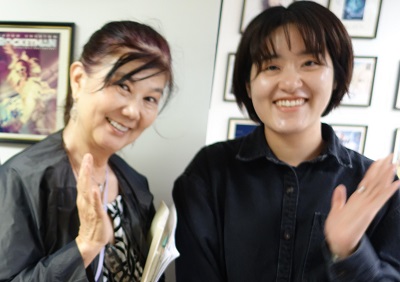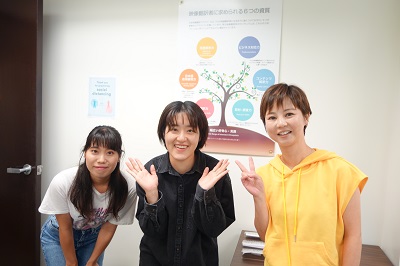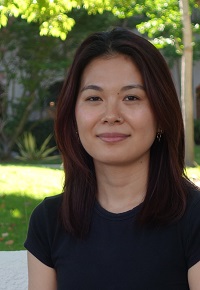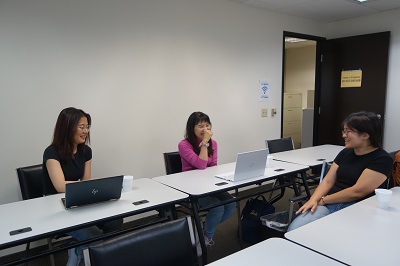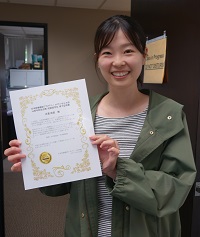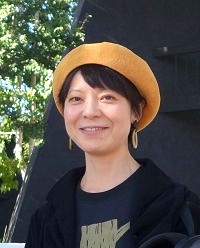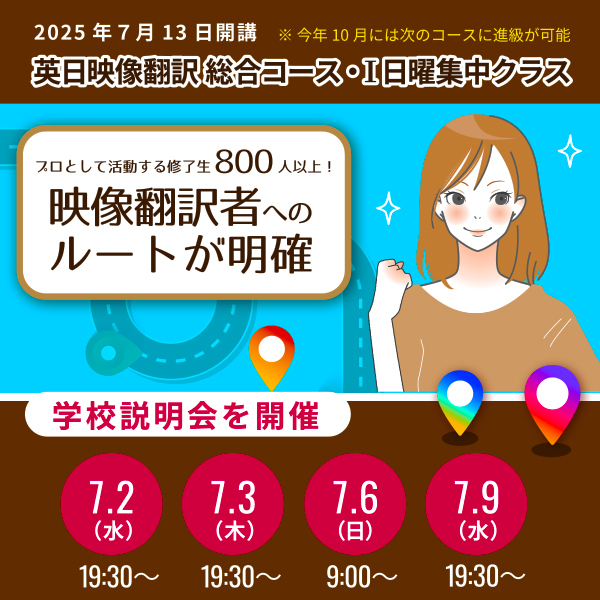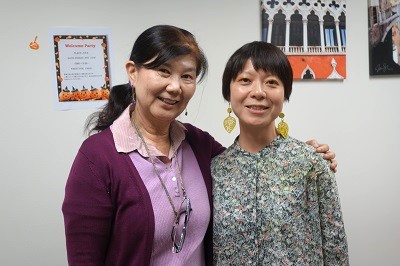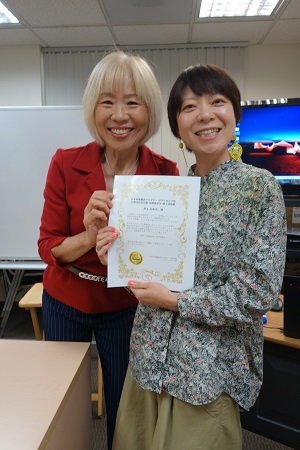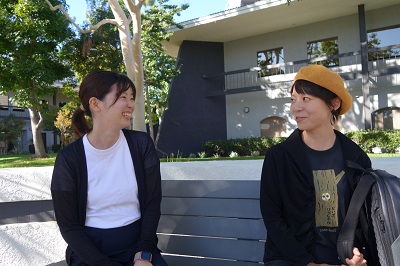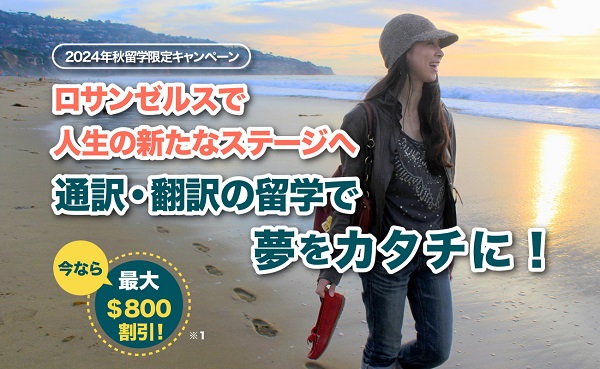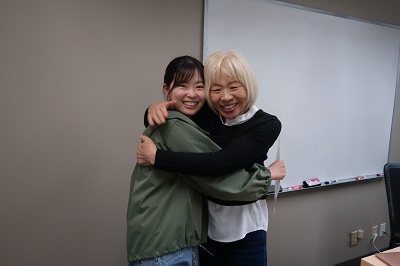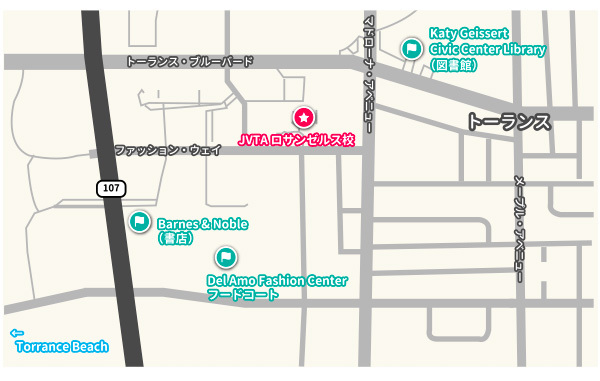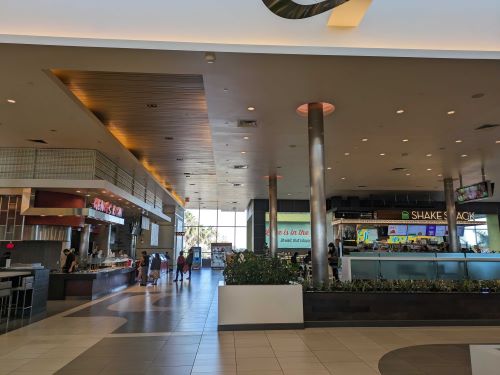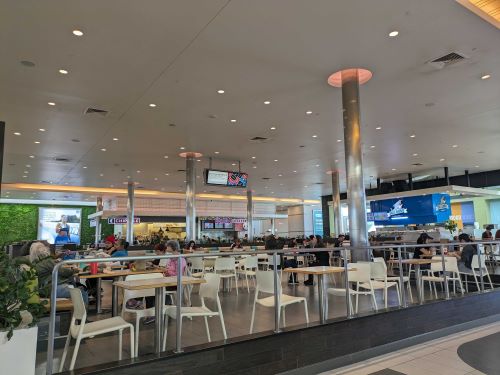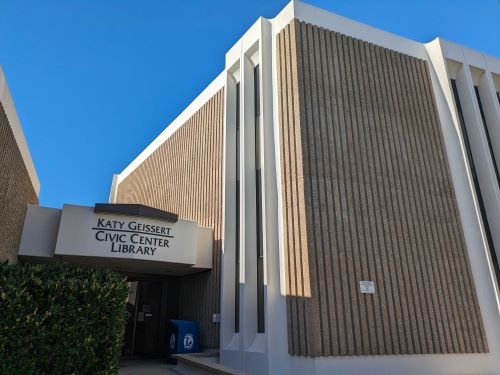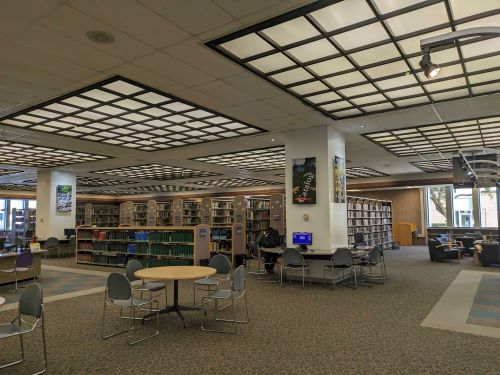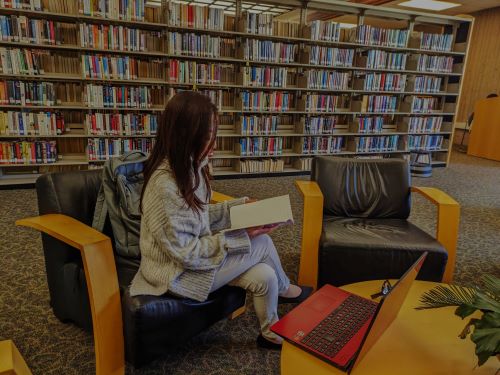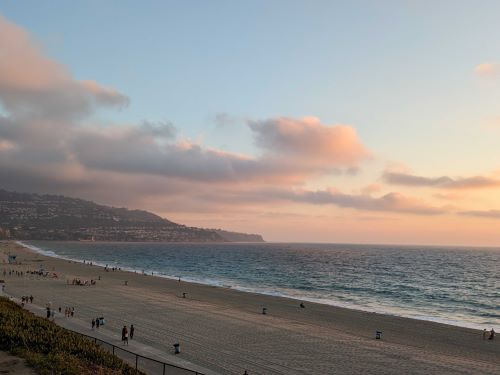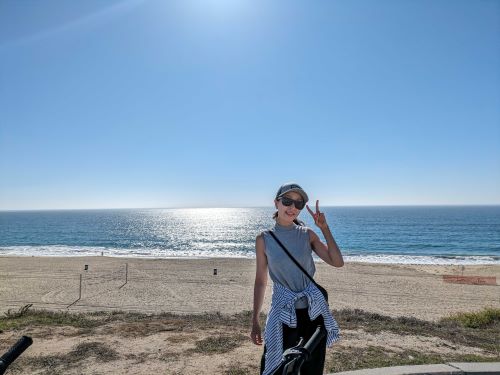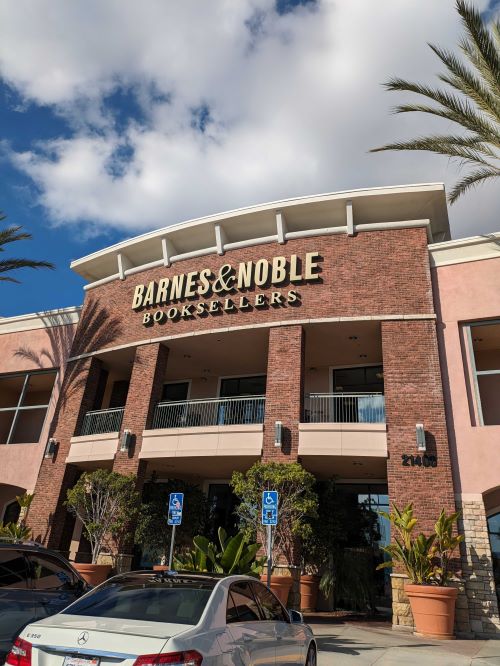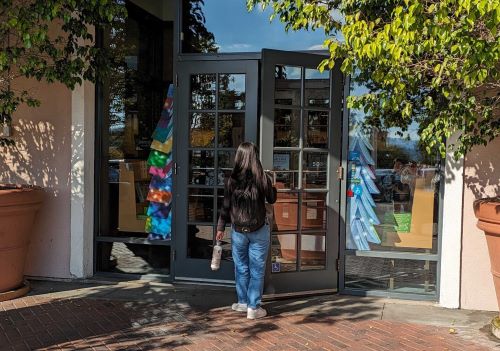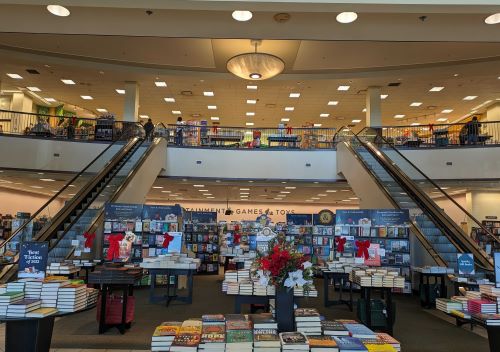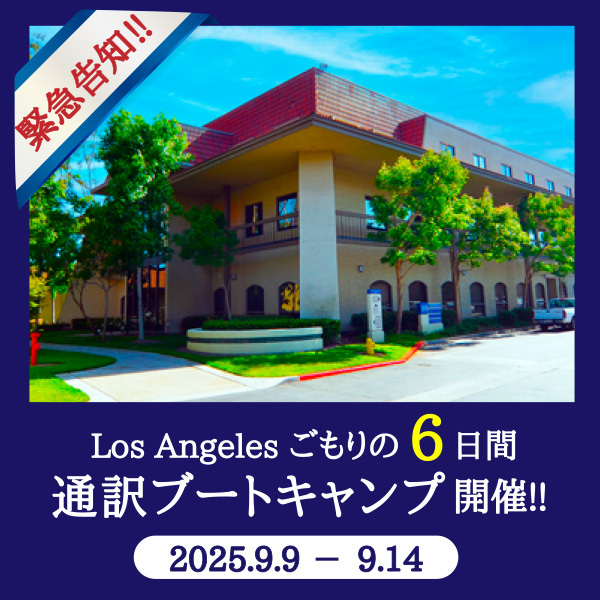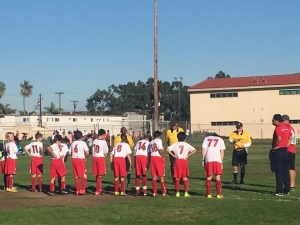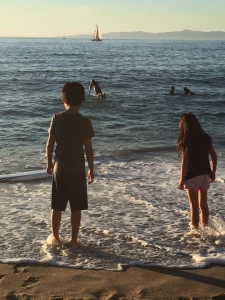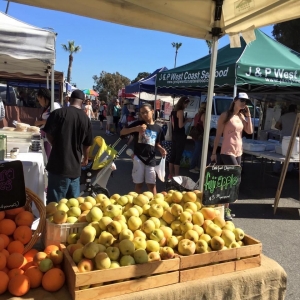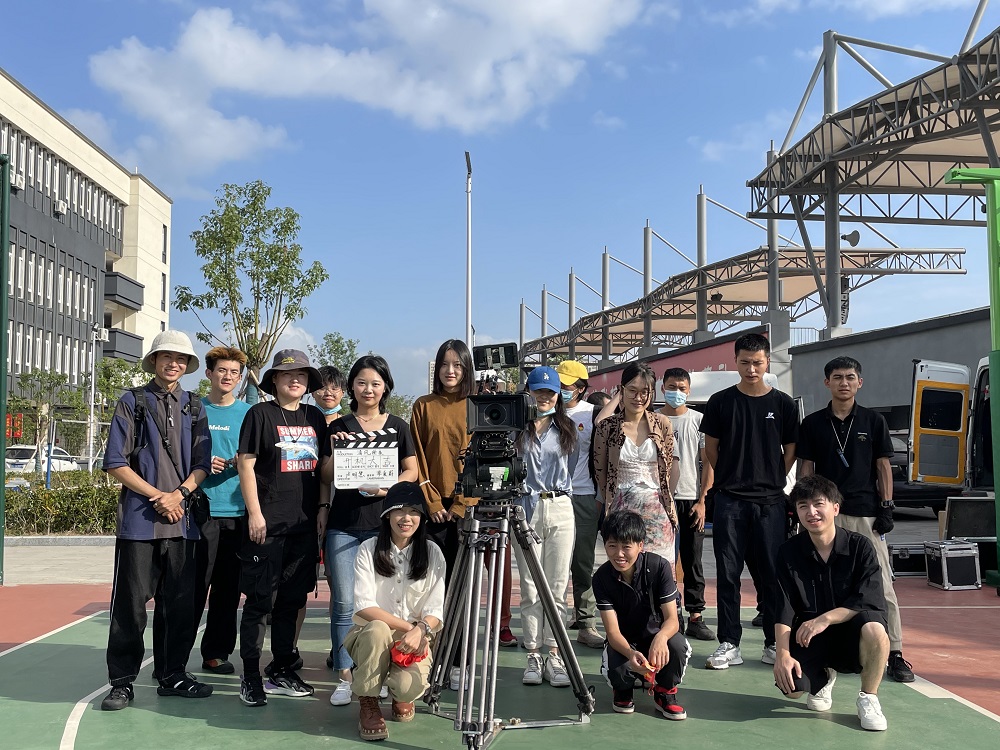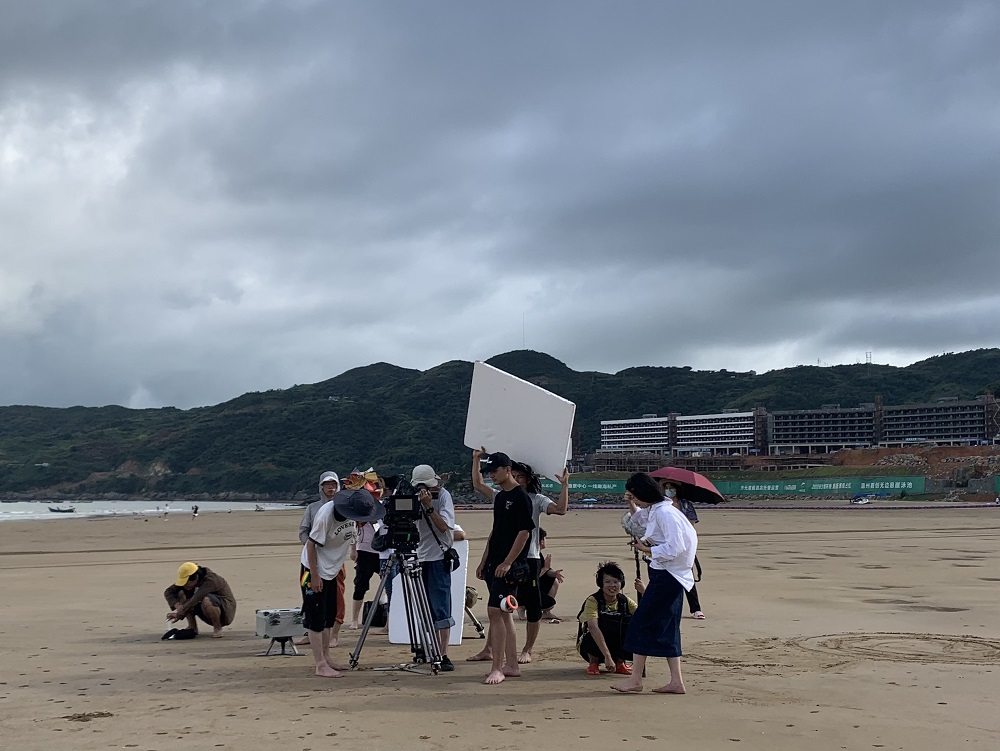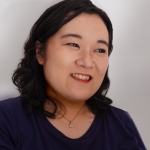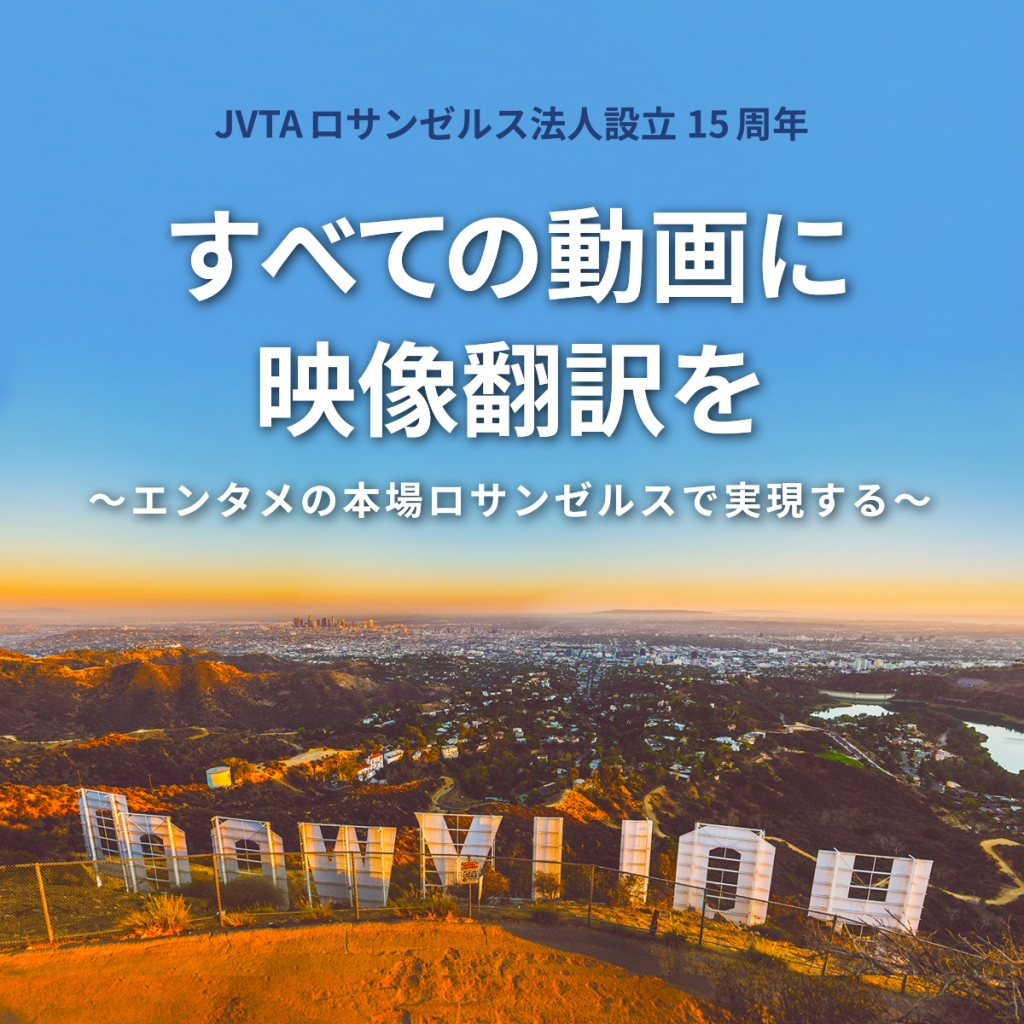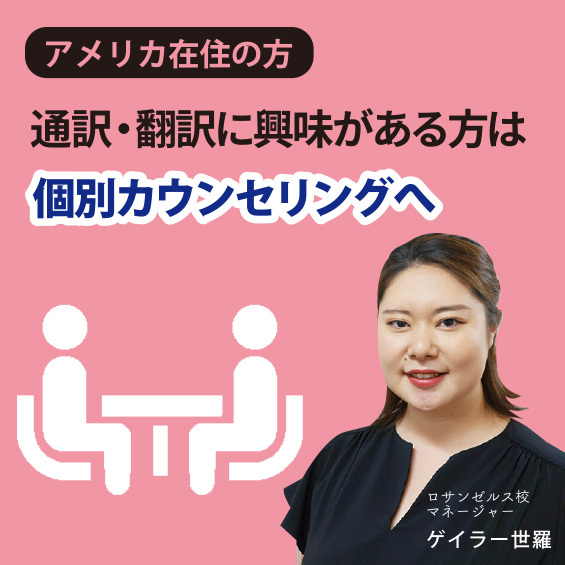【ロサンゼルス校短期留学体験紀】「通訳の技術が翻訳に応用できることを学びました」
映画やドラマが好きで英語の学習を続けてきた人なら、一度は留学に憧れたことがあるだろう。JVTAのロサンゼルス校では、留学生とすでに現地に住んでいる方が共に映像翻訳を学んでいる。東京校でも「ロサンゼルス校に行ってみたい」「留学体験をしてみたい」という声をいただく中、15周年を迎えた2023年、JVTAの受講生・修了生を対象に短期留学のプレゼントキャンペーンを実施(https://www.jvta.net/la/ryugaku-present/ )、東京校で映像翻訳を学んだH.S.さんが現地に飛び、夢を叶えた。どんなきっかけで留学を決意し、現地で何を見てきたのか、話を聞いた。
H.S.さん
滞在期間:2024年8月1日~17日
滞在先:ホテル
受講クラス:英日実践・実務・通訳
◆短期留学に応募したきっかけは何ですか?
以前何回か個人的な通訳の依頼を引き受けたもののうまくいかなかった経験があり、LAで通訳の授業を受けてみたいという気持ちがありました。
また、映像翻訳のトライアルになかなか受からず、1人で勉強することに限界を感じていたのが短期留学に応募したきっかけでした。
◆現地のクラスを受けて印象に残っていることはありますか?
逐次通訳の授業でシャドーイングをしました。今までもシャドーイングは学習に取り入れていましたが、「スムーズに言えなかった箇所や単語が弱点である」というディッキンソン佐恵子先生の言葉にハッとしました。また、映像翻訳の際も、口に出して訳したものを録音して文字起こしすると、自然な言い回しに近づけられるというアドバイスをいただき、通訳の技術が翻訳に応用できることを学びました。
ディッキンソン佐恵子講師と
◆休みなどの過ごし方や授業以外での思い出や感じたことを教えてください。
ビーチ沿いをサイクリングしました。8月でしたが気温が30℃になる日は全くなく、カラッとした気候でとても過ごしやすかったです。治安が良く、歩くのが好きなので、1日2万歩以上歩いて、カフェやスーパーマーケットをめぐりました。ただ、私以外に歩いている人がほとんどいなくて、車社会だということを体感しました。
◆ロサンゼルス校の授業を受けてよかったと思うことは?
アメリカで実際に活躍されている先生のエネルギーをひしひしと感じながら授業を受けられたのが良かったです。また、長期で留学しているクラスメートの努力も垣間見ることができ、励みになりました。スタッフの方もフレンドリーで、最初から最後まで安心して過ごすことができました。短い期間でしたが、日本を飛び出したからこそ繋がった縁を大切にし、今後の学習やトライアルに臨んでいきたいと思います。
クラスメートと リモート受講や通信講座も定着し、今ではJVTAの受講生、修了生は世界各地で学んでいる。しかし、ロサンゼルスに滞在し、現地の人と交流しながら日常生活を垣間見ることは留学ならではのかけがえのない体験だ。短期であれば、より気軽に挑戦できる。JVTAでは2024年10月期から、初心者を対象とした「プレパラトリーコース」を再開。興味のある方はぜひ、夢を叶えてほしい。
★LA留学相談会の詳細・お申し込みはこちら
★【ロサンゼルス校短期留学体験紀】アーカイブはこちら
【ロサンゼルス校短期留学体験紀】「再度、勉強しなければいけない環境に身を置こうと留学を決めました」
映画やドラマが好きで英語の学習を続けてきた人なら、一度は留学に憧れたことがあるだろう。JVTAのロサンゼルス校では、留学生とすでに現地に住んでいる方が共に映像翻訳を学んでいる。東京校でも「ロサンゼルス校に行ってみたい」「留学体験をしてみたい」という声をいただく中、15周年を迎えた2023年、JVTAの受講生・修了生を対象に短期留学のプレゼントキャンペーンを実施(https://www.jvta.net/la/ryugaku-present/ )、東京校で日英映像翻訳を学んだ井上結芽さんが現地に飛び、夢を叶えた。どんなきっかけで留学を決意し、現地で何を見てきたのか、話を聞いた。
★井上結芽さん
滞在期間:2024年6月6日~22日
滞在先:民泊サービスで見つけた部屋
受講クラス:日英実践・実務・通訳
◆短期留学に応募したきっかけは何ですか?
東京校の日英実践コースを修了し、トライアル合格を目指していましたが仕事の忙しさにかまけて勉強がおろそかになってしまいました。何かを変えなければ進歩することはできないと考え、「再度、勉強しなければいけない環境に身を置こう」と思い至りました。そんなときにLA校の短期留学のことを知り、応募しました。
◆現地のクラスを受けて印象に残っていることはありますか?
私が東京校で学んでいたころは、既にリモート授業になっていたので、まず先生とクラスメートと教室で一緒に授業を受けられることに嬉しさを感じました。授業の後などもクラスメートと授業の内容や課題、またどのようなバックグラウンドを持っているかなどもお話しできて興味深いときを一緒に過ごせました。
クラスメートと
日英の映像翻訳以外に、通訳と実務翻訳のクラスも受けさせていただいたのですが、初めての経験ばかりで最初はとても緊張しましたが本当にためになりました。通訳のクラスでは、今までやってきた字幕翻訳にはなかった「瞬発力; “translate on the spot”」が必要でした。瞬時に原文を理解し、分かりやすく訳すというのはとても難しいこと。周りの生徒さんたちはすでに練習を重ねてうまく訳していたので、最初は皆さんについていけないことがとてももどかしかったです。でも、授業に参加していくうちにもどかしさは学ぶ楽しさに変わりました。短期間っだので劇的な成長はありませんでしたが、クラスメートと先生から多くを学ぶことができ、今後の自分の課題も見えました。実務翻訳では、「原文通りに訳す」ということが必要とされ非常に難しく、字幕翻訳とは頭を切り替える必要がありました。(私は原文を正しく理解しつつ字数制限も考慮して「より分かりやすく」「より綺麗に」など編集して翻訳するクセがなかなか抜けませんでした。)書類や映像、生の会話など翻訳する対象によって翻訳の仕方も切り替えが必要なのだと学びました。また全クラスを通して、リサーチの大切さを再認識しました。
渡米前はこれまでの復習が主だろうと考えていたのですが、多くの新しいことも学んだ3週間でした。
◆休みなどの過ごし方や授業以外での思い出や感じたことを教えてください。
私は現在映像作品の特殊メイクを手掛けています。メイクの学校もLAで卒業しました。その際のクラスメートや当時のルームメートに再会したり、アメリカでしか買えないメイク道具を買いに出かけたりしていました。空いた時間は学校に行き自習をしていました。
◆ロサンゼルス校の授業を受けてよかったと思うことは?
自分自身を再度学びの場に置けたことです。そのことで今まで仕事でおろそかになっていた勉強を再度することができて、大きなモチベーションアップにつながりました。LA校で勉強した3週間は本当に楽しいものでした。今回機会を頂けたことに本当に感謝しています。
リモート受講や通信講座も定着し、今ではJVTAの受講生、修了生は世界各地で学んでいる。しかし、ロサンゼルスに滞在し、現地の人と交流しながら日常生活を垣間見ることは留学ならではのかけがえのない体験だ。短期であれば、より気軽に挑戦できる。JVTAでは2024年10月期から、初心者を対象とした「プレパラトリーコース」を再開。興味のある方はぜひ、夢を叶えてほしい。
★LA留学相談会の詳細・お申し込みはこちら
★【ロサンゼルス校短期留学体験紀】アーカイブはこちら
【ロサンゼルス校短期留学体験紀】どんなきっかけで旅立ち、現地で何を見てきたのか?
映画やドラマが好きで英語の学習を続けてきた人なら、一度は留学に憧れたことがあるだろう。JVTAのロサンゼルス校では、留学生と現地生が共に映像翻訳を学んでいる。15周年を迎えた2023年、JVTAの受講生・修了生を対象に短期留学のプレゼントキャンペーンを実施(https://www.jvta.net/la/ryugaku-present/ )し、現地へ飛んだ皆さんに取材。どんなきっかけで留学を決意し、現地で何を見てきたのか。お話を聞いた。
★Y.M.さん
「一人で学ぶスランプから脱して帰国後にトライアルに合格しました」
詳細はこちら
★井上万希子さん
「語学を学ぶ上で、現地に身を置いて吸収できることは最適な環境でした」
詳細はこちら
★井上結芽さん
「再度、勉強しなければいけない環境に身を置こうと留学を決めました」
詳細はこちら
★H.S.さん
「通訳の技術が翻訳に応用できることを学びました」
詳細はこちら
★★LA留学相談会の詳細・お申し込みはこちら
◆【2025年7月 英日映像翻訳 日曜集中クラス開講!】 ご興味をお持ちの方は無料の学校説明会へ! 入学をご検討中の方を対象に、リモートでカリキュラムや入学手続きをご説明します。ご都合・ご希望に合わせてお選びください。
【ロサンゼルス校短期留学体験紀】現地に身を置くことは語学学習に最適な環境でした
映画やドラマが好きで英語の学習を続けてきた人なら、一度は留学に憧れたことがあるだろう。JVTAのロサンゼルス校では、留学生と現地生が共に映像翻訳を学んでいる。15周年を迎えた2023年、JVTAの受講生・修了生を対象に短期留学のプレゼントキャンペーンを実施(https://www.jvta.net/la/ryugaku-present/ )、2011年に東京校で学んだ修了生、井上万希子さんは、10年以上のブランクを経て留学を決意して現地へ飛び、アメリカでの慣例や今起こっていることや風潮をリアルに感じることができたという。どんなきっかけで留学を決意し、現地で何を見てきたのか。お話を聞いた。
★井上 万希子さん
滞在期間:2023年11月2日~18日
滞在先:Airbnbで見つけた部屋 (学校から徒歩約10分)
受講クラス:映像基礎、通訳、実務
◆短期留学に応募したきっかけ、理由は?
2020年~2022年の間に開設されたJVTAの通訳講座でLAが拠点のディッキンソン佐恵子先生のオンライン授業を受講し、先生のエキサイティングな授業を実際にLAで受けてみたいと思ったことが最大のきっかけでした。さらに留学説明会を聴講して、バラエティに富んだ授業が受けられると知り、短期間で通訳も映像翻訳もどちらも学んでみたいと思っていた自分にはぴったりのカリキュラムだと思ったことから、パンデミックが落ち着いたら現地に行こうと心に決めていました。
ディッキンソン佐恵子講師と
※ディッキンソン佐恵子講師のインタビューはこちら
◆現地のクラスを受けて印象に残っていることは?
LAを拠点に活躍されている講師の方々の授業で例示されるアメリカでの慣例やその説明、また、長期留学で学んでいる生徒さんの訳出や意見を聞くことで、アメリカで今起こっていることや風潮をリアルに感じることができました。現地で、対面で意見交換できる場が貴重でありがたかったです。
オルセン由紀講師と 新出単語をクラスでシェア:現地で生活している中で触れた、ニュースや映像、広告、ドラマ、スポーツ実況や美術館での展示説明などの中から、自分が初めて知った単語やフレーズを皆が毎回3つ持ち寄り、共有しあう機会は、背景を知りながらボキャブラリーを増やすことができたので、大変得るものがありました。この取り組みは今でも自分なりに行い、これからは勤務している会社でも有志で広げていきたいと思っています。
◆休みなどの過ごし方や授業以外での思い出や感じたことは?
サンタ・カタリナ島日帰り旅:ロングビーチからフェリーに乗って約1時間で行ける、自然がたっぷりなサンタ・カタリナ島に足を伸ばしてきました。私が訪れたのは11月を過ぎていましたが、海に入れる気温だったのでシーカヤックをし、野生のアザラシ達(seals) にも遭遇できました。リゾート感がある美しい島、トーランスから日帰りで行けるので、お勧めです。
クラスメートと
◆LA校の授業を受けてよかったと思うことは?
語学を学ぶ上で、現地に身を置いて吸収できることは最適な環境だと実感しました。私が留学した時期は、ハロウィンから感謝祭、その後はクリスマスへと、アメリカの大きな季節行事に当たるタイミングだったので、現地のニュースはもちろん、住宅街の装いやスーパーで販売されている商品の変化を見て取り、現地の日常の一片を感じました。「カリフォルニアの青い空」がいかに青く、秋でも十分日焼けするほど強い日差しであることも、体を通して実感したほどです。翻訳や通訳は言葉との向き合いだと思いますが、五感で感じたLAの空気が訳出に活用できるよう、アウトプットを目指しています。
リモート受講や通信講座も定着し、今ではJVTAの受講生、修了生は世界各地で学んでいる。しかし、ロサンゼルスに滞在し、生活すべてで英語を浴びながら現地の日常に身を置くことは留学ならではの体験だ。JVTAでは2024年10月期から、初心者を対象とした「プレパラトリーコース」を再開する。現在、最大800ドルの割引きとなるキャンペーンも実施中。興味のある方はぜひ、夢を叶えてほしい。
★LA留学の概要とキャンペーンの詳細はこちら
★LA留学相談会の詳細・お申し込みはこちら
★ 8月4日開催!【サマースクール2024】~「好き」を仕事に繋げる留学 第2弾!~ロサンゼルスが教えてくれた私のキャリアパス
詳細・お申し込みはこちら
★【ロサンゼルス校短期留学体験紀】アーカイブはこちら
◆【2025年7月 英日映像翻訳 日曜集中クラス開講!】 ご興味をお持ちの方は無料の学校説明会へ! 入学をご検討中の方を対象に、リモートでカリキュラムや入学手続きをご説明します。ご都合・ご希望に合わせてお選びください。
【ロサンゼルス校短期留学体験紀】一人で学ぶスランプから脱出 帰国後にトライアルに合格しました
映画やドラマが好きで英語の学習を続けてきた人なら、一度は留学に憧れたことがあるだろう。JVTAのロサンゼルス校では、留学生と現地生が共に映像翻訳を学んでいる。15周年を迎えた2023年、JVTAの受講生・修了生を対象に短期留学のプレゼントキャンペーンを実施(https://www.jvta.net/la/ryugaku-present/ )、映像翻訳Web講座で学んでいたY.M.さんが現地に飛び、夢を叶えた。どんなきっかけで留学を決意し、現地で何を見てきたのか。お話を聞いた。
★Y.M.さん
滞在期間:2023年11月7日~17日
滞在先:ホームステイ
受講クラス:映像基礎、通訳、実務
◆短期留学に応募したきっかけ、理由は?
通信の映像翻訳Web講座では一人で勉強していて、マンネリに陥ってしまったタイミングで応募しました。気合いを入れなおしてプロになるんだ!と。アメリカに行ってみたかったのもあります。
◆現地のクラスを受けて印象に残っていることは?
日本ではWeb講座を受講していましたので、クラスメートがいることが新鮮でした。長期留学組のみなさんは仲が良く、生活面でも困ったときは助け合っているようでした。授業中は活発に発言をされていて、学ぶことが多かったです。先生方や学校スタッフの方もフレンドリーで、なんでも相談できる雰囲気だと感じました。
クラスメートと
◆休みなどの過ごし方や授業以外での思い出や感じたことは?
2週間だけの滞在でしたので、観光や旅行はあまりできませんでしたが、ホストファミリーととても良い関係を築くことができました。ロスっ子の秘密のスポットに連れて行ってくれたり、バイソン肉のハンバーガーを作ってくれたりと、ホームステイならではの思い出を作ることができました。帰国する際は寂しかったですが、先日ファミリーが日本に遊びに来た際に再会することができ、とても嬉しかったです。
◆LA校の授業を受けてよかったと思うことは?
映像翻訳のクラスで「この出来ならトライアルも合格しますよ」と褒めていただき、素直に嬉しかったです。Web講座はきめ細やかなフィードバックで大変勉強になりましたが、一人で勉強していると自信がなくなることもありました。ちょうど行き詰まっていたタイミングでLAに行くことができ、気持ちを新たに再スタートすることができたと思います。
オルセン由紀講師と 帰国後は、LA校で先生にいただいた言葉を励みにして課題に取り組み、トライアルも合格することができました。
リモート受講や通信講座も定着し、今ではJVTAの受講生、修了生は世界各地で学んでいる。しかし、ロサンゼルスに滞在し、現地の人と交流しながら日常生活を垣間見られることは留学ならではのかけがえのない体験だ。JVTAでは2024年10月期から、初心者を対象とした「プレパラトリーコース」を再開する。現在、最大800ドルの割引きとなるキャンペーンも実施中。興味のある方はぜひ、夢を叶えてほしい。
★LA留学の概要とキャンペーンの詳細はこちら
★LA留学相談会の詳細・お申し込みはこちら
★ 8月4日開催!【サマースクール2024】~「好き」を仕事に繋げる留学 第2弾!~ロサンゼルスが教えてくれた私のキャリアパス 8月4日開催
詳細・お申し込みは
★【ロサンゼルス校短期留学体験紀】アーカイブはこちら
【留学生現地レポート】ロサンゼルス校周辺のおすすめスポットはここ!
ロサンゼルス校があるトーランス市は、ロサンゼルス国際空港から車で30分程度のところにある閑静な住宅街。留学生にとっては落ち着いて学べる上に、週末は観光地などにも行くことができる立地が魅力だ。
ロサンゼルス校のキャンパスはトーランス市の中心にあり、徒歩圏内でも十分楽しむことができる。現在留学している受講生に学校周辺のおすすめスポットをレポートしてもらった。
<全体MAP>
スポット1:Del Amo Fashion Center フードコート
授業終わりにクラスメートとランチをするのにおすすめなのが、デルアモ・ファッション・センター内にあるフードコートです。ここではピザ、ハンバーガー、ポキ丼、メキシカン料理、中華料理やモンゴル料理など、様々な食事を楽しむことができます。お値段も$10〜$20程度で、物価が高めなロサンゼルスでもリーズナブルな価格でランチを食べることができます。さらに、デルアモ・ファッション・センター内では無料のWi-Fiに接続できる上、フードコート内にはところどころ電源コンセントもあるので、私はランチ終わりにそこでそのまま授業の復習をしたり、次の課題に取り組んだりすることもあります。
◆Del Amo Fashion Center公式サイトはこちら
スポット2:Katy Geissert Civic Center Library ケイティ・ジェイスト・シビック・センター(図書館)
次にご紹介するのは、学校から徒歩5分ほどの場所にあるKaty Geissert Civic Center Library(市民図書館)です。授業後は毎回ここで勉強をして帰るという留学生も結構いて、私もかなりの頻度で利用しています!3階建ての広々とした館内には個人専用スペースがたくさんあり、落ち着いて勉強するには最適の場所です。個人スペースの各デスクには電源が備え付けられており、もちろん無料のWi-Fiもあるので、インターネットでの調べ物(映像翻訳の仕事には欠かせないものです!)もできますし、息抜きに動画を観たりもできちゃいます。
あまりの居心地の良さに、気がついたら数時間経っていた…ということもしょっちゅうある、超オススメスポットです。
◆Katy Geissert Civic Center Library 公式サイトはこちら
スポット3:Torrance Beach トーランスビーチ 勉強や課題の息抜きにおすすめなのが、トーランスビーチに出かけることです。
学校から車で約15分の場所にあり、地元の人たちに愛されるこぢんまりとした美しいビーチです。私の家からは自転車でも行けるので、学校が休みの日などはひとりでふらっと出かけることもあります。おすすめポイントは、なんといってもとても閑静であることと、夕日の美しさです!
実はこのトーランスビーチから北に自転車を走らせると、レドンドビーチ、ハモサビーチ、そしてマンハッタンビーチと続いているのです。休みの日などはサイクリングもかねてビーチ巡りをしても楽しそうです。
◆Torrance Beach 公式サイトはこちら
スポット4: Barnes Noble
日常の忙しさから逃れ、落ち着いた雰囲気に癒されたい方にはぜひ、アメリカの代表的な書店であるBarns and Nobleをおすすめします。学校からも徒歩圏内にあるBarnes and Nobleの1階にはスターバックスが入っているので美味しいドリンクを飲みながら、時間を気にせずゆっくりと好きな本を楽しむことができます。こどもの絵本から小説、ファッションマガジンに至るまで品揃えも豊富で、立ち読みもOKなので読みたい本が見つかるまでじっくりと時間をかけて探すことができます。英語の本をまるごと1冊読み切るのは中々ハードルが高いと感じるかもしれませんが、語彙力や表現力を磨くにはぴったりの勉強方法だと思うので、アメリカにいる間にぜひ挑戦してみてください!
◆Barnes & Noble公式サイトはこちら
ロサンゼルス校への留学を検討中の方はぜひ参考にしてほしい。
ロサンゼルスの1週間で‟新・通訳スキル”をマスター 2025年9月9日(火)~9月14日(日)
特設サイトを公開!気になる方は詳細をチェックしてください。
ロサンゼルスに親子留学!
長年憧れだった映像翻訳を学ぶため、約3年間JVTAロサンゼルス校に留学した山西貴美子さん。自身の留学に加えて、2人の子供を帯同する親子留学を実現させた。山西さんはまず、JVTAとアルクで共同開発した映像翻訳Web講座で映像翻訳の学習を開始。その後、留学先のロサンゼルス校で通訳や映像翻訳などを学んだ。当時、小学生だった子供たちとのアメリカ生活や山西さん自身のJVTAでの学びについて話を聞いた。
●東京のインターナショナルスクールvsロサンゼルス留学(現地校)
●親子留学は事前準備を徹底すること
●子供はロサンゼルスの現地校へ入学。学校選びのコツは?
●アメリカ生活で通訳・翻訳に必要な基礎的な語学力を磨く
●両立のコツは自分の学びの時間と子供との時間のメリハリ
※息子さんの習い事がアメリカの子育てについて学ぶ機会に
●留学したいが一歩踏み出せない方へ
※空いている時間にお子さんたちとファーマーズマーケットや近くのビーチに行くことも
◆JVTAロサンゼルス法人設立15周年を迎えました◆ ▶こちら
武蔵野美術大学の学生を支援 映像翻訳の力で若き才能が開花する
2022年春、JVTAは武蔵野美術大学映像学科とコラボを果たした。同校で教授を務める小口詩子さんから依頼をいただき、同校で学ぶロメイエさんが監督した中国語作品『清風徐来』の英語字幕制作に協力した。本作は、2022年7月15日から開幕するSKIPシティ国際Dシネマ映画祭2022で英語字幕付きでスクリーン上映され、またオンライン配信も行われている。英語字幕を手掛けたのは、JVTA修了生の新田ありささん。中国語作品の和訳から英語字幕を制作するという手順を踏んでいる。
●字幕は作品と一体化した表現の一部
「JVTAの修了生に、卒業制作2作品を翻訳していただきましたが、両方とも国際映画祭に入選したので驚いています。映像で物語を伝える映画にとって、洗練された字幕は、音楽のように作品と一体化し、表現の一部として機能します。字幕は、オリジナルの映像にはない付加要素として、邪魔にならないように、映像と響き合わなければなりません。愛情と想像力(ときには創造力)をもって作品を理解し、背景を考慮しながら、削ぎ落とされた字数で意味や情報、ニュアンスを最大限伝える。感性も技術も必要なお仕事だなと改めて感じました。学生の不手際や細かいリクエストにも耳を傾けて善処くださり、深く感謝しています。目から鱗の言葉選びに唸ったり、タイトルの英訳もご提案いただいたり、監督たちが感激していました。」(小口さん)
中国出身。浙江工商大学で映像を学び、卒業制作で『孔雀草日記』を監督。その後、武蔵野美術大学映像・写真コースの大学院(修士課程)に入学。在学中、『その跡』、『毛糸玉』などの短編を制作する。
「修了制作作品『清風徐来』は初めて20人ほどの大きなチームで制作した作品でした。私としては初めてのチャレンジだったこともあり、撮影現場では思いがけないことが次々と起きました。撮影日の天気予報は豪雨ばかりでしたが、撮影本番には晴れ上がり、今から思えば本当にラッキーでした。SKIPシティの入選には驚きつつ、スタッフや役者さんたちとともに喜んでいます。」(ロメイエさん)
『清風徐来』の作品詳細はこちら
● 宗教・文化を含め作品をよく理解した上で中日翻訳→英語字幕を作成
「本作は中国語作品です。日本語字幕が付いていて、それを元に英語字幕を制作するというプロセスでした。映像翻訳では、セリフの真の意味や映像で起こっていることを視聴者に伝えるために原文の意味から少し離れてしまうことはやむを得ないと思っています。そのため、日本語字幕の意味を真に受けるよりは、役者の演技や、映像の全体的のテーマ、監督の意思等も参考にするなど、調べものを慎重に行い、翻訳に取り組みました。本作は、仏教が重要なテーマとなっているため、訳語の意味が合っているかだけなく、中国と日本の仏教に違いがないか、英語圏の仏教徒は同じような表現を使うかに気をつけました。その他に、すべての登場人物に現実味が湧くように、実際この話が英語圏であったらどのように話すのかを考えて、ナチュラルな英語になるように工夫しました。」(新田さん)
映像翻訳では、セリフを表面的に訳して終わりではない。的確な字幕作りをするためには、登場人物の関係性の理解が必須だ。
さらに、新田さんは字幕の「見た目」まで気を配ったという。字幕は映像作品の一部だ。見た目を重視するのは、まさにプロの技と言える。※1 スポッティング…字幕の出るタイミング(IN点)と消えるタイミング(OUT点)を決める作業
映像コンテンツが増え続ける中、映像に関わる職業選択をする学生が増えている。映像翻訳は、作り手の思いを受け止め、視聴者にその思いや意図を字幕や吹き替えにして届けるという、映像制作に関わる仕事だ。映像制作を学ぶ学生にも、翻訳者が、作り手と同じ熱量を持って映像と向き合っていることを知っていただきたい。新田さんが英語字幕を手掛けた『清風徐来』は、2022年7月15日から開幕するSKIPシティ国際Dシネマ映画祭2022で英語字幕付きでスクリーンとオンライン配信の両方で上映される。JVTAでは、今後とも若きクリエーターたちの作品を世に送り出す支援を続けたい。
SKIPシティ国際Dシネマ映画祭2022 公式サイト http://www.skipcity-dcf.jp/
関連記事【JVTAが新たな才能の世界進出を英語字幕でサポート!】SKIPシティ国際Dシネマ映画祭が開幕!
◆◇◆◇◆◇◆◇◆◇◆◇◆◇◆◇◆◇◆
◆【入学をご検討中の方対象】
こちら
◆【映像翻訳をエンタメのロサンゼルスで学びたい方】 こちら
【ロサンゼルス校 修了生インタビュー】エンタメ業界での経験を活かして映像翻訳に挑戦。日英トライアルに合格した秘訣とは?
JVTAでは、さまざまな職歴や経歴を持った受講生が通訳・翻訳を学んでいる。ロサンゼルス校の修了生 菅井桃子さんは、2010年に渡米して演劇を学び、その後、アメリカ国内で女優や歌手として活動を開始した。『マンマ・ミーア』や『コーラスライン』などの人気ミュージカルに出演。2015年には『アリージャンス』でブロードウェイデビュー。パフォーマーとして活躍しながら、JVTAロサンゼルス校で映像翻訳を学び、その後、日英映像翻訳の修了トライアルに合格した。菅井さんに、ロサンゼルス校での学びや日英トライアル合格の秘訣について話を聞いた。
●コロナ禍で仕事がキャンセル・・・在宅でできる仕事がしたい
コロナ禍に、パフォーマーの仕事でキャンセルが続いていた頃、JVTAロサンゼルス校の体験レッスンを受けました。演劇に関わっているので、もちろん昔から映画やドラマが好きで、映像に字幕を付ける映像翻訳の仕事にも興味がありました。ロックダウンで時間に余裕ができたこともあり、ロサンゼルス校への入学を決めます。これまで積み上げてきた女優や歌手としてのキャリアもありますが、それ以外にも手に職をつけて、できることを増やしたかったのが理由の1つです。パフォーマーだけではなく翻訳者という形で引き続きエンタメに関わる仕事に出会えてよかったと思っています。
●アメリカで身につけた英語力を活かして日英映像翻訳を選択
1学期目に受講する映像翻訳基礎クラスでは、英日・日英両方の映像翻訳についてを学びました。2学期目に受講する実践クラスでは、英日・日英どちらを受講するか選択できますが、私は日英映像翻訳の道に進みます。仕事もプライベートでも英語しか話さないので、実は日本語より英語の方が得意なんです。とは言っても、英語は母国語ではないので日英映像翻訳者になれるのか不安はありましたが、私の周りには英語ネイティブがたくさんいるので、翻訳に役立つ英語を教えてもらえるチャンスがたくさんあります。アメリカで生活していることは、翻訳をする上での強みにもなっていますね。
●映像翻訳に必要な英語力とは?
私はアメリカ生活の中で、実践的な英語を身につけてきたタイプです。映像翻訳には、文法や単語力など英語の基礎は必須ですね。また、英語の映像コンテンツを字幕なしで理解できるくらいの力は必要だと思います。ロサンゼルス校では、アメリカ在住の受講生以外に、日本から来ている留学生もいますが、こちらにいる間には、カルチャーセンターに行ったり、いろいろなコミュニティに属したりして、積極的に人に会うことをおすすめします。映像翻訳には、辞書を引いただけではわからない英語表現や、文化の理解が必要ですが、私はアメリカ人の友人や同僚と交流しながらそれらを学びました。
●仕事と学校を両立させ隙間時間も映像翻訳と向き合う
仕事をしながら学校に通いましたが、両立は可能だと思います。毎週、学校から翻訳の課題が出るので、締め切りまでに終わらせる必要がありますが、週に3時間の授業に参加する以外に、平均7時間ほど課題に取り組みました。まとまった時間が取れない時は、舞台のリハーサルの休憩中など、隙間時間を利用して課題をこなすこともありました。
●修了後のトライアルに合格。その秘訣は?
基本的なことですが、授業で学んだ一つひとつのポイントを翻訳原稿に反映できていたので合格したのではないかと思っています。特に映像翻訳に求められる原文解釈については、日本語の意味を徹底して理解するようにしました。また、原稿の推敲を重ねて、自身で作った字幕に違和感やエラーがないか確認を怠らなかったのも良い結果に繋がったと分析しています。講師からいただいたアドバイスも役立ちました。私は、原文の意味を一字一句訳しすぎて流れの悪い字幕になりがちとよく指摘されていたので、トライアルの時もそれを思い出して翻訳に取り組みました。自身の弱みを知っていると、その点に気をつけようと思えますよね。
●フリーランスは自分の強みを知っていることが重要
フリーランスは自分自身を売るスキルも必要だと思います。自分は何が得意なのか強みをよく知ることは必須ですね。私は、日本語ネイティブなので、日本語の理解には問題ないこと、アメリカ生活が長いので英語ネイティブが使う言い回しや口語表現が得意であることを強みにしたいです。また、日本の作品を海外に届けることにやりがいを感じているので、アニメ、ドラマ、ドキュメンタリーなどジャンルを問わずにさまざまな作品の映像翻訳を手掛けたいと思います。
●映像翻訳に向いているのは映像コンテンツが好きな人、書くことが好きな人
JVTAロサンゼルス校で映像翻訳を学べて本当によかったと思っています。これまでパフォーマーとしてエンタメ業界に関わってきましたが、映像翻訳者としても映像コンテンツを扱う仕事に繋がることができました。映像翻訳は、言語に興味がある人、言葉が好きな人、ドラマや映画など映像が好きな人に向いている職業だと思います。少しでも迷っているようでしたら、ぜひ挑戦してみてください。
JVTAロサンゼルス法人15周年! ▶こちら
北米在住で、映像翻訳・実務翻訳・通訳を学びたい方を対象にリモート個別カウンセリングを承ります。▶こちら
日本からの留学生も受け付けています。まずは自宅から参加できる「リモート留学相談会」へ!
お申し込みは▶こちら
『ドライブ・マイ・カー』(濱口竜介監督)が海外で愛される理由 ロサンゼルス在住映画ジャーナリスト中島由紀子さんが解説
『ドライブ・マイ・カー』に続け!
濱口竜介監督の映画『ドライブ・マイ・カー』が第94回米アカデミー賞の作品賞を含む4部門にノミネートされた。カンヌ国際映画祭では脚本賞、ゴールデングローブ賞の非英語映画賞を受賞するなど日本映画の歴史を塗り替えている。さらに濱口監督は、2022年2月に開催された第72回ベルリン国際映画祭のコンペティション部門の審査員を務めたほか3月には、第72回芸術選奨の文部科学大臣賞を受賞。日本アカデミー賞でも最優秀作品賞、最優秀監督賞を含む8部門を受賞。英国アカデミー賞(BAFTA)では非英語作品賞を受賞するなど国内外で今最も注目を集める映画の一つとなっている。これまでJVTAでは『偶然と想像』をはじめとする濱口監督作品の英語字幕を担当してきた。『ドライブ・マイ・カー』でも制作に協力している。VIDEO
JVTA 中島さんはゴールデン・グローブ賞で『ドライブ・マイ・カー』に投票されたようですね。映画の感想を教えてください。中島さん 見終わった後は「すごいものを見た!」と感じました。しかし、何が凄かったのかはっきり掴めないんですよね。騒がしい会話が一切ない静かなトーンの映画なのに、見ている側は感情のアップダウンが激しいでしょ? 作中であまりにもいろいろなドラマが起きるので、感情のレイヤーが幾重にもなって見ている側はストリーの深さに引き込まれます。観客の多くも、西島秀俊演じる主人公、家福の心の中が手に取るように理解できたのではないでしょうか。
JVTA 特に印象に残っていることは何ですか?中島さん 映画の静けさに圧倒されました。静かなのに、次々と引っかかるポイントが出てくるし、登場人物の感情がどんどん入ってくる。あの静けさには、小津安二郎監督の映画のような印象を持ちました。小津映画の特徴と言えば、ローアングル、カメラを動かさない静かなトーンが特徴。海外でも、小津をリスペクトする人が多くいます。日本的な作り方で多くの人の心を動かしたのは、濱口監督のなせる技ですね。
JVTA 中島さんの周りの映画関係者の反応はいかがですか?中島さん カンヌ国際映画祭で脚本賞を受賞した時から、アメリカの映画関係者の間でも話題になっていました。“マスター・ピース”と呼ぶ人もいましたよ。 “マスター・ピース”という言葉は簡単には使わないので、その言葉からも評価の高さが伺えます。
JVTA 本作が海外でも評価されている理由はどこにあると思いますか?中島さんの見解をお聞かせください。中島さん 海外の観客も、登場人物の感情に共感できたからでしょうね。感情というものはグローバルです。この映画は、主人公、家福の絶望が出発点になるわけだけど、例えば愛など、人の心のコアな部分は宗教や文化を超えて海外の人も同じものを持っている。良いことは良い、悪いことは悪い。それは世界共通なので、外国の方にも届いたのだと思います。
JVTA ハリウッドでの濱口監督に対する期待値はどうでしょうか?中島さん ハリウッドからお誘いはあるでしょう。お若いのに素晴らしい観察力をお持ちの方ですよね。アカデミー賞を取った後、ハリウッドに呼ばれて映画を作ると、独自のビジョンを崩してしまう監督が多くいますが、濱口監督には自身のペースとビジョンとスタイルを守って活躍してほしいです。
JVTA 他の非英語映画と比較して、本作が特に優れている点はありますか?中島さん 分かりやすい比較をすると、韓国映画『パラサイト 半地下の家族』も世界中でヒットしましたが、あれは一般受けするエンタメ映画ですよね。社会問題が描かれつつもサスペンスやホラーの要素がある大衆向けの作品です。一方で『ドライブ・マイ・カー』は、玄人向け。多くの人が好きになるスタイルではないですが、世界で賞を取っているのは、映画作品として優れているからだと思います。原作が村上春樹氏ということも注目の一つと思われがちですが、アメリカでの反応を見ているとあまり関係ないのではと感じています。映画関係者でも「原作者は誰?」と聞いている人もいたくらいです。
JVTA アメリカでのPRや売り出し方はどうでしたか?中島さん カンヌで注目されてからスピーディーにアメリカでも宣伝が始まっていました。これまでは話題になったとしても、「なぜすぐにアメリカに来ないのだろう?」という時期が必ずありました。でも『ドライブ・マイ・カー』は、早い時点で配給会社がついたのか、日本の制作側の対応が早かったのか、アメリカの観客にもすぐに届いたのは良かったですね。
JVTA 今回の『ドライブ・マイ・カー』の快挙に触発されて、アメリカでのPRに力を入れる作品も増えてくると思いますが、今後、日本映画に期待することを教えてください。中島さん 映画はアメリカでヒットするかどうかが重要ですが、今、アメリカ社会では、ダイバーシティが重んじられているため、外国のものを受け入れる土俵が整っています。視聴者が、自分とは異なる見た目や文化を持つ人を画面の中でも目にすることに慣れているため、“外国っぽい”とも思わなくなっています。つまり、日本映画もアメリカで受け入れてもらえるチャンスがあるということです。
「感情はグローバルなものだからこそ、この映画が海外の観客にも響いた。」そう語ってくれた中島さん。海外の劇場で現地の人と一緒に日本映画を見ると映像翻訳者は、制作者のメッセージを観客に届けるという最大のミッションを背負っていると改めて気づかされる。映像コンテンツのグローバル化・多言語化が勢いを増す時代において「言語や文化の違う人たちに作品を届ける」という映像翻訳者のニーズは高まり、その役割は、唯一無二であり続けるだろう。『ドライブ・マイ・カー』は第94回米アカデミー賞4部門にノミネートされたことでさらに注目が集まっている。3月28日(日本時間)の授賞式が待ち遠しい。
【関連記事】https://www.jvta.net/tyo/2021ryusuke-hamaguchi/
◆【映像翻訳にご興味をお持ちの方は今すぐ「リモート個別相談」へ!】 入学をご検討中の方を対象に、リモート個別相談でカリキュラムや入学手続きをご説明します。こちら
